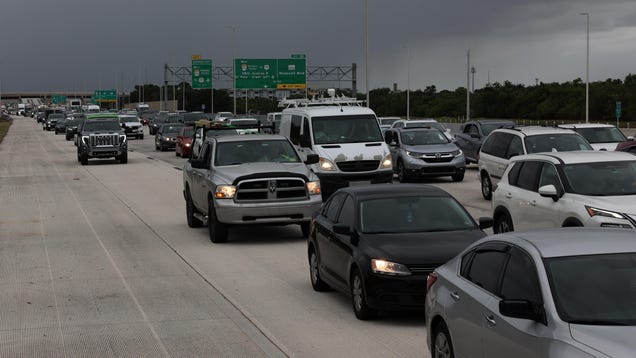Understanding the Impact of Hurricane Milton on Florida’s Gulf Coast
As Hurricane Milton approaches the Gulf Coast of Florida, residents are bracing for what meteorologists describe as a potentially catastrophic storm. With warnings of severe weather and the possibility of significant flooding, many are left wondering how to best prepare for the impending disaster. This article delves into the implications of Hurricane Milton, offering insights on safety measures, evacuation strategies, and the broader context of climate change that has led to increasingly severe storms.
Preparing for Evacuations: What Residents Need to Know
In the face of an approaching hurricane, the first priority for residents should be safety. Evacuations are often necessary, and understanding the best practices can make a significant difference.
1. **Stay Informed**: Regularly check local news sources and the National Hurricane Center for updates on the storm’s path and intensity. Social media platforms can also provide real-time information from local authorities.
2. **Plan Your Route**: If evacuation is necessary, have a clear plan. Identify multiple routes to avoid traffic congestion, which can be a major issue during mass evacuations. Apps like Waze can help navigate through less crowded roads.
3. **Pack Essentials**: Prepare an emergency kit that includes food, water, medications, important documents, and personal items. Don’t forget supplies for pets if you have them.
4. **Secure Your Home**: Before leaving, take steps to protect your property. This includes boarding up windows, securing outdoor furniture, and turning off utilities if advised.
5. **Communicate Your Plans**: Inform family and friends of your evacuation plans. Establish a communication strategy to stay connected, especially if cell service is disrupted.
The Role of Gas Supply During Evacuations
One critical concern during hurricane evacuations is the availability of fuel. As residents flock to gas stations, supplies can dwindle quickly. Recent reports indicate that Florida officials are working to ensure that gas stations remain stocked ahead of Hurricane Milton. However, it’s advisable for residents to fill their tanks early and consider carrying extra fuel if safe to do so.
The Broader Context: Climate Change and Increasing Storm Severity
Hurricane Milton is not just another storm; it represents a growing trend of increasingly severe weather events linked to climate change. According to the National Oceanic and Atmospheric Administration (NOAA), the frequency and intensity of hurricanes have risen over the past few decades. Warmer ocean temperatures fuel more powerful storms, leading to heightened risks for coastal communities.
A study published in the journal *Nature* highlights that the intensity of hurricanes has increased by approximately 10% since the 1970s. This alarming trend underscores the importance of preparedness and adaptation strategies for residents in vulnerable areas.
Community Resilience: Building Stronger Futures
In the wake of devastating storms, community resilience becomes paramount. Local governments and organizations are increasingly focusing on disaster preparedness and recovery plans. Initiatives include:
– **Infrastructure Improvements**: Investing in stronger levees, better drainage systems, and flood-resistant buildings can mitigate the impact of future storms.
– **Public Awareness Campaigns**: Educating residents about emergency preparedness and response can save lives. Workshops and community drills can empower individuals to act swiftly and effectively during crises.
– **Mental Health Support**: The psychological toll of hurricanes can be significant. Communities are beginning to recognize the importance of mental health resources in the aftermath of disasters.
Real-Life Examples of Resilience
Hurricane Harvey in 2017 serves as a poignant case study. The storm caused unprecedented flooding in Houston, Texas, leading to a reevaluation of urban planning and emergency response strategies. In its aftermath, the city implemented new flood control measures and improved communication systems to better inform residents during future emergencies.
Similarly, New Orleans has made strides in disaster preparedness since Hurricane Katrina, focusing on community engagement and infrastructure upgrades to withstand future storms.
Conclusion: The Path Forward
As Hurricane Milton approaches, the focus must remain on safety, preparedness, and community resilience. By understanding the risks and taking proactive measures, residents can better navigate the challenges posed by severe weather events. Moreover, recognizing the broader implications of climate change can inspire collective action towards building a more sustainable future. With the right strategies in place, communities can emerge stronger and more prepared for the storms that lie ahead.

